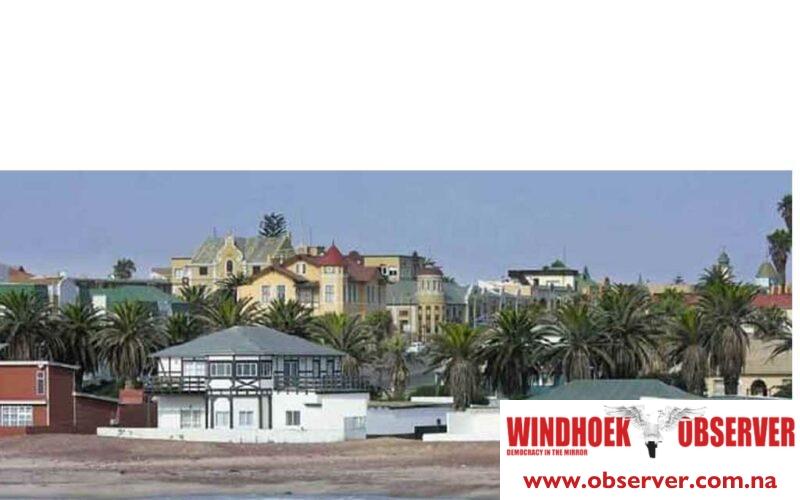Swakopmund’s built environment is undergoing a visible transformation, driven by a combination of sustained residential demand, strategic municipal investment, and broader development efforts aimed at repositioning the town as a regional hub for tourism, industry, and education.
According to the latest municipal building statistics, Swakopmund recorded a steady 18% year-on-year increase in approved building plans in June 2025, with monthly approvals rising by 22% from May to June. Residential projects continue to dominate, making up over 96% of approvals, an indication of the town’s persistent housing demand and the pace of suburban expansion.
However, what’s particularly promising is the growing ecosystem of complementary infrastructure projects and targeted investment opportunities outlined by the municipality, which could reshape Swakopmund’s future development trajectory.
One of the most ambitious and potentially transformative projects currently in motion is the upgrade and expansion of Swakopmund’s airport infrastructure. The municipality has confirmed that the airport development plan has been formally approved, laying the groundwork for improved air connectivity and future commercial traffic.
The upgraded facility is expected to unlock a new tier of economic potential by facilitating logistics, boosting tourism arrivals, and attracting aviation-related investments. Moreover, the airport precinct has
been earmarked for adjacent industrial and support services, including warehousing, maintenance facilities, and commercial leasing space. With land in the Hage Heights Precinct designated for such complementary uses, the airport zone is likely to evolve into a multi-purpose transport and logistics node, an essential anchor in Swakopmund’s broader industrialisation and trade vision.
At the same time, the town is actively investing in foundational infrastructure upgrades to support future growth. Ongoing projects include the enhancement of roads, municipal amenities, and bulk services, as evidenced by the upgrade of the Libertina Amathila Avenue and road improvements across key suburban corridors. These interventions are not only improving traffic flow and public safety but also enhancing access to land parcels earmarked for development. The Mole Cubicle Upgrade is another notable initiative aimed at enhancing public spaces and promoting coastal tourism. The upgraded cubicles will offer better facilities for beachgoers and events, reflecting a blend of urban revitalisation and service delivery improvements.
Land servicing efforts across Swakopmund have also accelerated. The municipality is implementing large-scale projects to unlock new residential and mixed-use zones, with active progress reported in areas such as Kramersdorf Extensions (32, 33, and 34), the Maturura Block, and Mondesa Heights.
These areas are being equipped with essential services – roads, water, sewerage, and electricity to prepare for vertical development. Servicing is also underway for mass housing zones such as Extension 42 (DRC) and Mile 4, aimed at addressing housing shortages and creating space for affordable and middle-income housing.
Notably, private developers such as Elize Investment and Quintessential have been involved in partnership developments, indicating that land servicing is not only municipally driven but increasingly underpinned by public-private collaboration. This approach is helping accelerate delivery while attracting investor confidence.
In parallel, the municipality’s planning division continues to streamline spatial planning and regulatory approvals. Planning authority status has been reinforced, and long-term planning is now aligned with servicing priorities ensuring that land zoning, plot allocation, and servicing timelines move in tandem. The Northern Wedge and Airport Corridor have also been identified as strategic growth areas, with potential for future investment hubs once key infrastructure is in place.
Swakopmund’s building pipeline is not only about responding to current residential demand it’s about laying the structural foundation for a more connected, resilient, and economically diverse urban centre. As servicing projects progress and strategic investment zones take shape, we anticipate a broader shift in building plan approvals to include more commercial, institutional, and industrial developments. In the near term, approvals will likely remain weighted toward housing, but by 2026 and beyond, Swakopmund could see stronger momentum in high-value projects tied to education, logistics, hospitality, and green infrastructure provided that investment partnerships continue to materialise and enabling infrastructure keeps pace.
This evolving project pipeline offers a compelling opportunity for contractors, property developers, and financiers who are seeking to align with a town that is proactively shaping its economic future through spatial planning, infrastructure development, and investment facilitation. –Simonis Storm Securities




